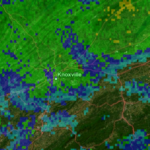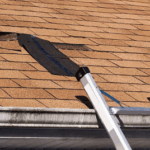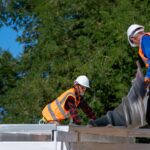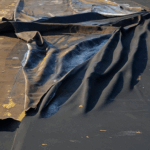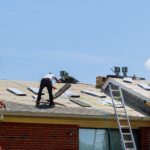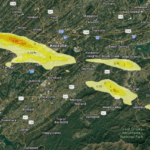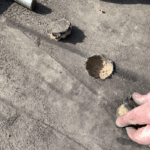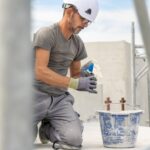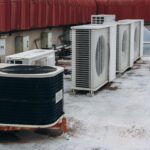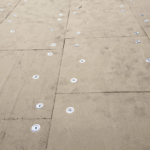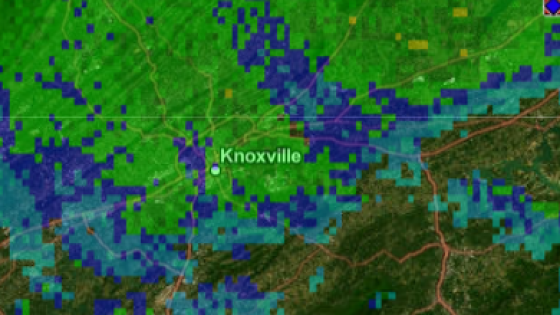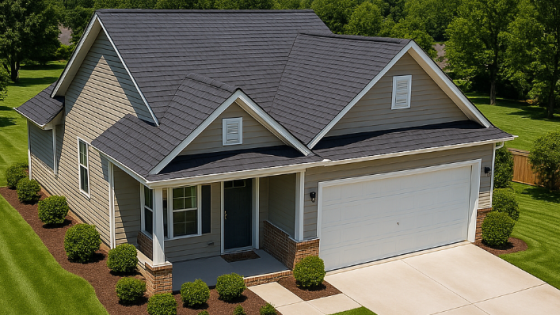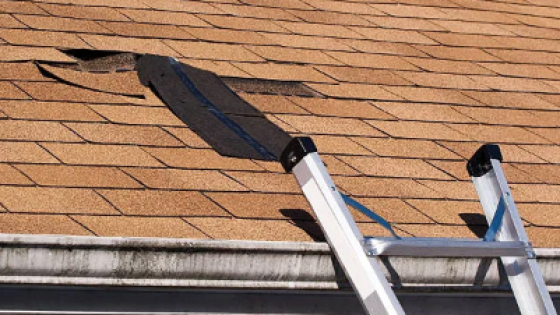Roof damage from wind can be a silent but costly problem for homeowners in Knoxville, TN, especially when it’s not identified early.
One of the ways roofing professionals detect and document wind damage is by using chalk codes. These markings provide critical information about the type and severity of damage, making it easier to file insurance claims and schedule timely repairs.
In this article, we’ll explore the significance of chalk codes for wind damage, how professionals use them, and what homeowners in Knoxville should be aware of.

Understanding Wind Damage to Roofs
Wind damage often occurs during severe weather events like thunderstorms, tornadoes, or even high-wind days. In Knoxville, strong wind gusts can dislodge shingles, cause curling, or even tear off parts of the roof. While some damage may be obvious, such as missing shingles, much of the damage may be less noticeable at first glance, like slight cracks, or loosened shingles that can lead to leaks over time.
Common Types of Wind Damage:
– Lifted Shingles: Strong wind can lift the edges of shingles, weakening the roof’s protection and allowing water to seep underneath.
– Curled Shingles: This occurs when wind and moisture cause the corners of the shingles to curl up.
– Cracked Shingles: High winds can create pressure that cracks shingles.
– Missing Shingles: Severe gusts can pull shingles completely off, leaving parts of your roof exposed.
– Gutter Damage: Winds may also bend or detach gutters, leading to drainage issues.
Why Chalk Codes are Used
Roofing professionals use chalk to mark specific areas of concern on a roof during an inspection. These marks, or chalk codes, indicate areas where damage has been identified, often specifying the type of damage (wind, hail, etc.) or the severity. Chalk codes serve a dual purpose:
- Visual Reference for Contractors: They help contractors know exactly where repairs or replacements are needed.
- Documentation for Insurance Claims: Marking wind damage on the roof provides a visual record, making it easier for homeowners to file insurance claims.
Chalk codes may include circles, arrows, and other symbols to highlight areas like lifted or missing shingles, cracks, or other damage. In Knoxville, roofing contractors may also use specific shorthand to differentiate between types of damage, especially when dealing with multiple causes like wind and hail.
What Do Chalk Codes Look Like?
Chalk codes are typically simple and easy to understand. Here’s an example of common chalk markings you might see on your roof after a wind damage inspection:
| Chalk Code | Meaning |
|---|---|
| Circle | Shingle crack or damage spot |
| Arrow | Direction of wind causing shingle lift |
| 'X' | Missing shingle location |
| Line | Seam where shingles are loosening |
Professionals use different colors of chalk, often white or yellow, to make the markings clearly visible against dark shingles.
The Process of Inspecting Wind Damage
When a roofing company comes to inspect your home for potential wind damage, they follow a systematic process:
- Initial Inspection: The roofing expert will walk the roof, checking for visible signs of wind damage like missing or curled shingles.
- Chalk Marking: Once they identify areas of concern, they use chalk to mark spots where damage has occurred. For example, an arrow pointing in the direction of the wind might indicate where shingles were lifted.
- Photographic Evidence: Many contractors will take photos of the roof, showing the chalk codes as a reference to include in their report.
- Detailed Report: After the inspection, you’ll receive a detailed report highlighting the damage, along with recommendations for repair or replacement.
- Insurance Documentation: In many cases, roofing contractors assist in filing insurance claims by providing detailed notes and visual evidence of the damage.
Chalk Codes and Insurance Claims
For Knoxville homeowners, proper documentation is key when filing an insurance claim for wind damage. Roofers who use chalk codes are creating a “map” of your roof’s damaged areas. Insurance adjusters can then cross-reference these markings with their own assessment, ensuring that no damage goes unnoticed.
An important factor in the claims process is how the insurance company evaluates wind damage. Typically, they will look at:
– Severity: How extensive the wind damage is, from light lifting to full-blown missing shingles.
– Age of Roof: Older roofs are more prone to wind damage and may have a higher likelihood of denied claims.
– Previous Repairs: If the roof has been repaired before, it may impact the claim depending on the quality of the repairs.
Roofing Services in Knoxville, TN
If you’re concerned about potential wind damage to your roof, it’s important to contact a professional roofing company in Knoxville, TN. Many local contractors are experienced in handling wind damage inspections and repairs. Here’s a breakdown of services typically offered by Knoxville-based roofing companies:
| Service | Description |
|---|---|
| Wind Damage Inspections | Thorough inspections to identify and mark wind damage using chalk codes. |
| Roof Repair | Repair of wind-damaged shingles, flashing, gutters, and more. |
| Roof Replacement | Full roof replacement if the damage is extensive. |
| Insurance Claim Assistance | Help with filing insurance claims for wind and storm damage. |
| Emergency Repairs | Quick response for urgent roof repairs due to wind or storm damage. |
FAQs About Wind Damage and Chalk Codes
Chalk codes help mark and document areas of wind damage on a roof for both contractors and insurance adjusters.
It depends on the severity. Minor wind damage can often be repaired, but extensive damage may require roof replacement.
Look for visible signs like missing or curled shingles. A professional inspection is the best way to detect less obvious damage.
Most homeowner insurance policies cover wind damage, but coverage may depend on the age of the roof and other factors.
An inspection typically takes a few hours, depending on the size and complexity of the roof.
Yes, professionals are trained to spot damage that homeowners might miss, ensuring your roof remains secure.
No, they are temporary and can wash off with rain, so it's important to document them quickly.
Contact a local roofing company for a professional inspection.
Many roofing companies offer free inspections, especially if repairs or replacements are needed.
It's recommended to have your roof inspected annually or after major storms.

